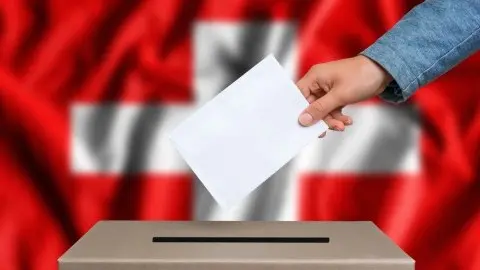Italy: Conte gets a challenging mandate
After 80 days of stalemate, President Sergio Mattarella has mandated Giuseppe Conte to form a government. But the choice of the finance minister will tell us more about how challenging the 5SM/League alliance will be for Europe
On Wednesday evening, President Sergio Mattarella gave Giuseppe Conte, a professor of law and a civic lawyer the mandate to form a new government backed by the anti-establishment Five Star Movement and the right-wing League. Professor Conte, who had been confirmed earlier in the day by Luigi di Maio, the Five Star leader and Matteo Salvini, the head of the League as their preferred candidate, accepted with reservation.
An attempt to strike a balance between incompatible objectives
In a brief press statement, professor Conte made his debut saying he was conscious of having to confirm Italy’s European and international position. He clarified that his government would be a government of change, as the country is expecting answers and proposed to be the defence attorney of the Italian people. He added that he would submit a programme based on the agreement reached between the 5SM and the League and concluded that over the next few days he would prepare the list of ministers for President Mattarella's approval.
The extent to which Conte will have a say in the choice of ministers will be somewhat revealing of whether he will be an executioner of the 5SM/League program or a leader of the future government
Unsurprisingly, Conte’s short speech wanted to strike a difficult balance between the need to reassure the role of Italy on the international stage and that of reiterating the message that Italy and Italians will come first.
As meeting both goals completely looks almost impossible, a mid-way solution would call for compromises that the two leaders of the 5SM and the League have so far been unwilling to make. The full implementation of the program (AKA contract) that they agreed upon would push the Italian deficit/GDP ratio easily to the 5-6% area violating European rules and is likely to be met with stern opposition from both the EU Commission and European partners.
Special focus on the choice of finance minister
The next step in the process of forming a new government will be a list of proposed ministers.
Here, the choice of the finance minister will be of paramount importance. According to the Italian constitution, this task should be a matter for the candidate PM, but following the local debate, it seems that choice is very much in the hands of the leaders of the two parties supporting the government. The extent to which Conte will have a say in this will be somewhat revealing of whether he will be an executioner of the 5SM/League program or a leader of the future government.
Over the last few days, the League has strongly backed Paolo Savona for the role of the finance minister, an experienced economist with an impressive CV that boasts being a minister of industry in the Ciampi government, working at the Bank of Italy and being a university professor.
Savona was initially pro-euro but soon turned into a harsh critic of the euro and the constraints that EU membership imposes on Italy. Over time he has been notably critical of the hegemonic role of Germany in European governance since the birth of the euro. He would surely be a technically qualified candidate but at the same time a strong statement that the 5SM/Lega ticket government want to start in a challenging mood.
EU Commission sits on the fence, waiting for a budget draft
For the time being, European institutions have kept away from the domestic political debate. In the country recommendations released yesterday, the EU Commission took a neutral stance on public finance developments, preferring not to add to the additional short-term pressure.
While not deemed in breach of the debt rule in 2017, Italy was reminded that a 0.3% structural adjustment is needed in 2018, with no possible delay, and that a 0.6% additional adjustment will be required in 2019. The Commission recommends Italy to complete judicial, public administration, and labour market reforms and given Italian demographics, more pension savings should be sought.
This will be food for thought for the next government, whose real test will be the next budget law, which will be presumably sketched soon in a reworked DEF and drafted after the summer.
Installation likely a fast process
The timeline for government formation foresees Conte running a round of consultations with the parties to check whether a majority can be reached in parliament. If so, Conte will complete the list of proposed ministers and will submit it to president Mattarella while definitively accepting the mandate. The president will then have to issue three decrees, marking the official nomination of the prime minister, the nomination of ministers, and the acceptance of the resignation of the outgoing caretaker Gentiloni government.
After these, the new government will be sworn in and will officially take office. Within ten days of installation, the new government will have to undergo the confidence vote in both branches of the parliament.
In our view, the installation part will be quick, possibly by the weekend.
This publication has been prepared by ING solely for information purposes irrespective of a particular user's means, financial situation or investment objectives. The information does not constitute investment recommendation, and nor is it investment, legal or tax advice or an offer or solicitation to purchase or sell any financial instrument. Read more
Tags
ItalyDownload
Download article
24 May 2018
In Case You Missed It: Why June’s the month to watch This bundle contains 8 Articles